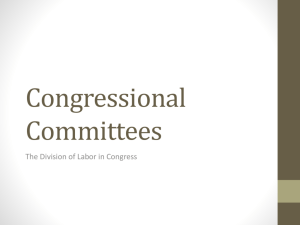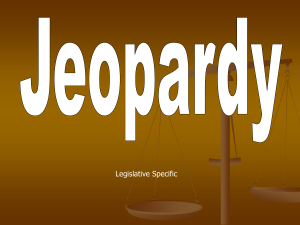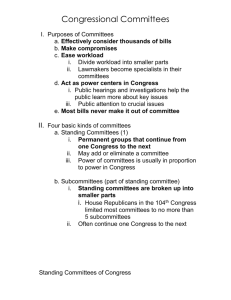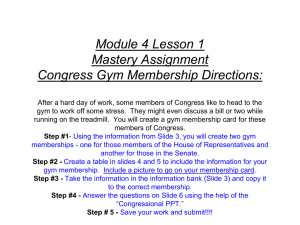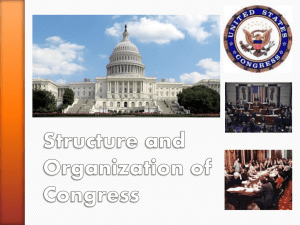Congressional Committees
advertisement
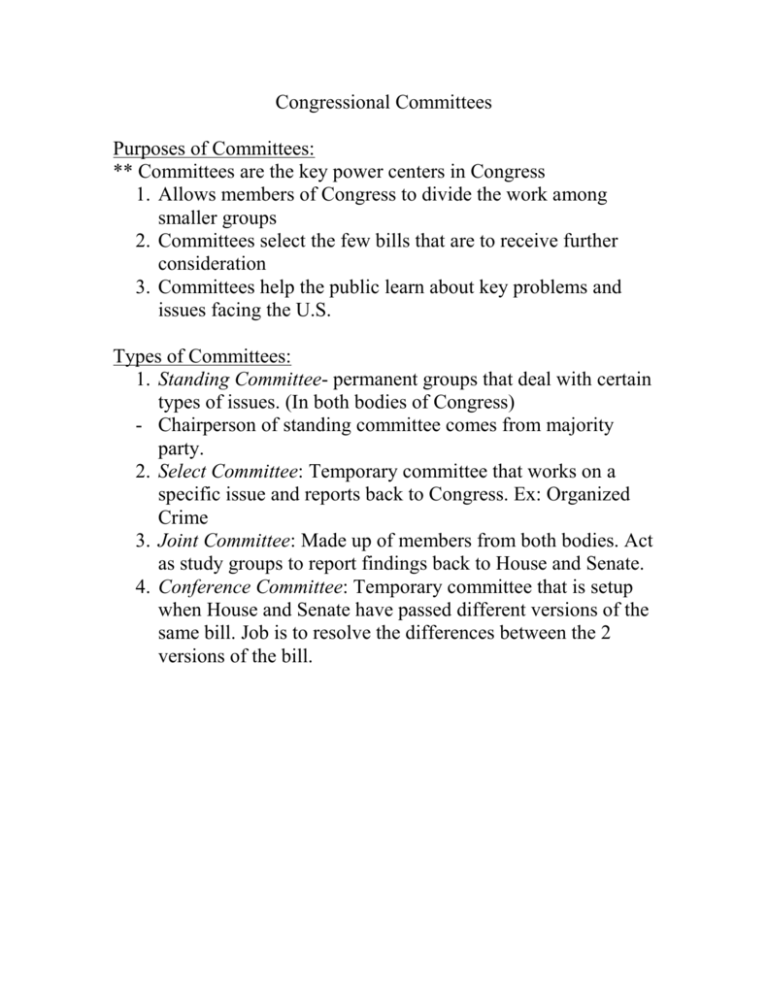
Congressional Committees Purposes of Committees: ** Committees are the key power centers in Congress 1. Allows members of Congress to divide the work among smaller groups 2. Committees select the few bills that are to receive further consideration 3. Committees help the public learn about key problems and issues facing the U.S. Types of Committees: 1. Standing Committee- permanent groups that deal with certain types of issues. (In both bodies of Congress) - Chairperson of standing committee comes from majority party. 2. Select Committee: Temporary committee that works on a specific issue and reports back to Congress. Ex: Organized Crime 3. Joint Committee: Made up of members from both bodies. Act as study groups to report findings back to House and Senate. 4. Conference Committee: Temporary committee that is setup when House and Senate have passed different versions of the same bill. Job is to resolve the differences between the 2 versions of the bill. Committee Questions: Pgs. 329-333 1. Read Representative Clem Miller’s quote in the opening on page 329. Explain in your own words what he thinks about committees and Congress. 2. What impact do Standing Committees have on proposed bills? 3. How does the political party with majority in each body of Congress have an advantage on each committee? 4. What power does the House Rules Committee have in regard to voting on a bill? 5. Compare and contrast joint committees and conference committees. 6. Woodrow Wilson once noted that Congress in its committee rooms is Congress at work. Explain his meaning. Discussion Questions: What are some topics that you think Congress should have a committee for? Why do you think committees are used in Congress? Why would members of Congress seek particular committee assignments?

